I visited two Osprey nests this morning. Both are occupied, but with no evidence yet of young. The chicks should hatch soon. At each nest I was treated to an osprey eating a mid morning fish … and much more. In birding, occasionally all the angles add up. Today was such a morning. Both the sun and wind were behind me. Assuming anything more than a breeze, raptors due to their size will never take off down wind. The first sequence of images are a take-off. While I knew said bird was eating, I had no idea the fish was almost whole, and firmly grasped in the Osprey’s talons.
A pause before the take-off photographs. Folks have heard me espouse about the importance in using burst or continuous mode for bird photography. These five images took place in less than 1/2 second. Using a single shot mode, I would have captured just that … a single photo, but which image would it have been? With the fish? Taking Off? Who knows? In addition, I had RAW turned off. This almost doubles my continuous mode to 14 frames per second. While I know some people like to take RAW images, the result of taking that approach would have meant I would have missed 1/2 the take-off photos (RAW is almost twice as slow). Finally, since this a short photography tutorial, I performed minor editing in Photoshop Elements: Opened JPG image in Camera RAW (this is not a RAW image), slid clarity +40, Black +70 and White +20. At that point I finished opening the image and adjusted Shadows +12 and Highlights +6. A minor crop was used to position the osprey in the image at the point desired. As a fyi, these are considered “minor edits” in the world of photography.
Canosia State Wildlife Refuge Osprey Take-Off (less than 1/2 second for the sequence of photos … for those of you who know Duluth, this is the “steam shovel nest” on Lavaque Road approximately 2 miles north of the Martin Road intersection)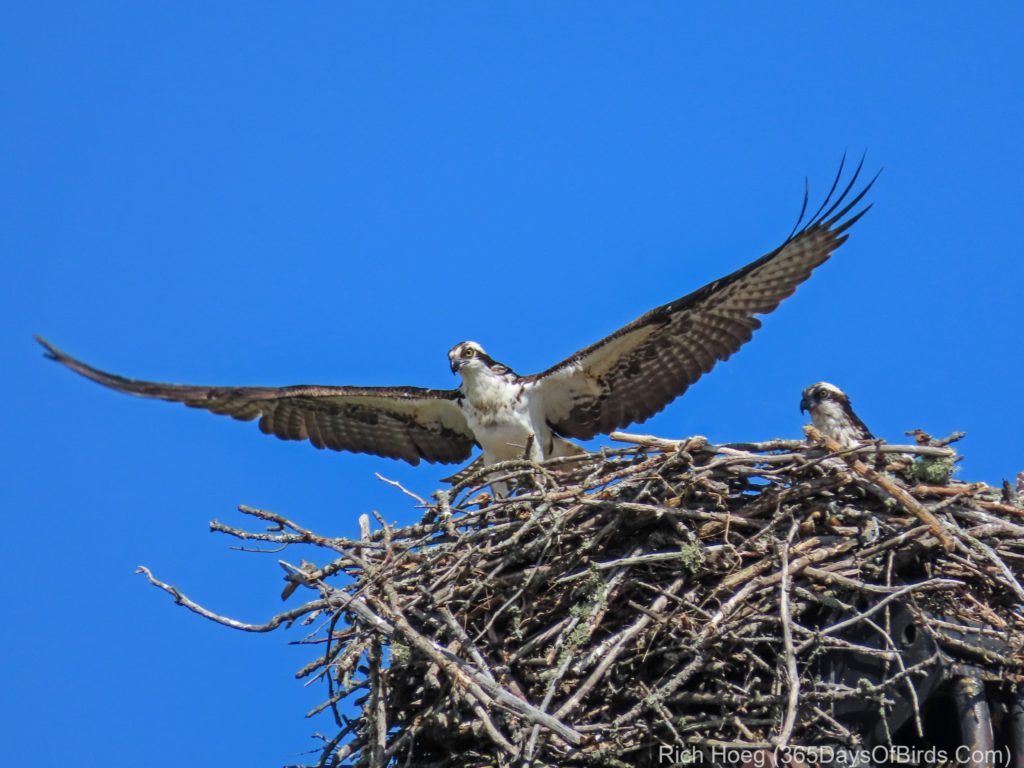
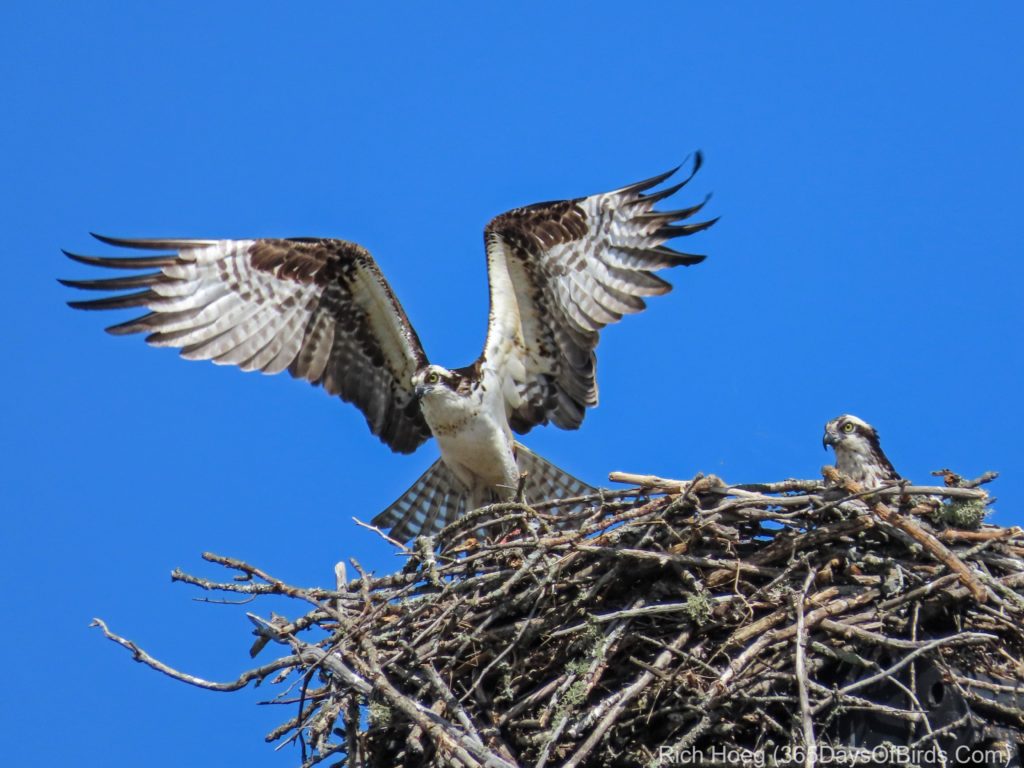
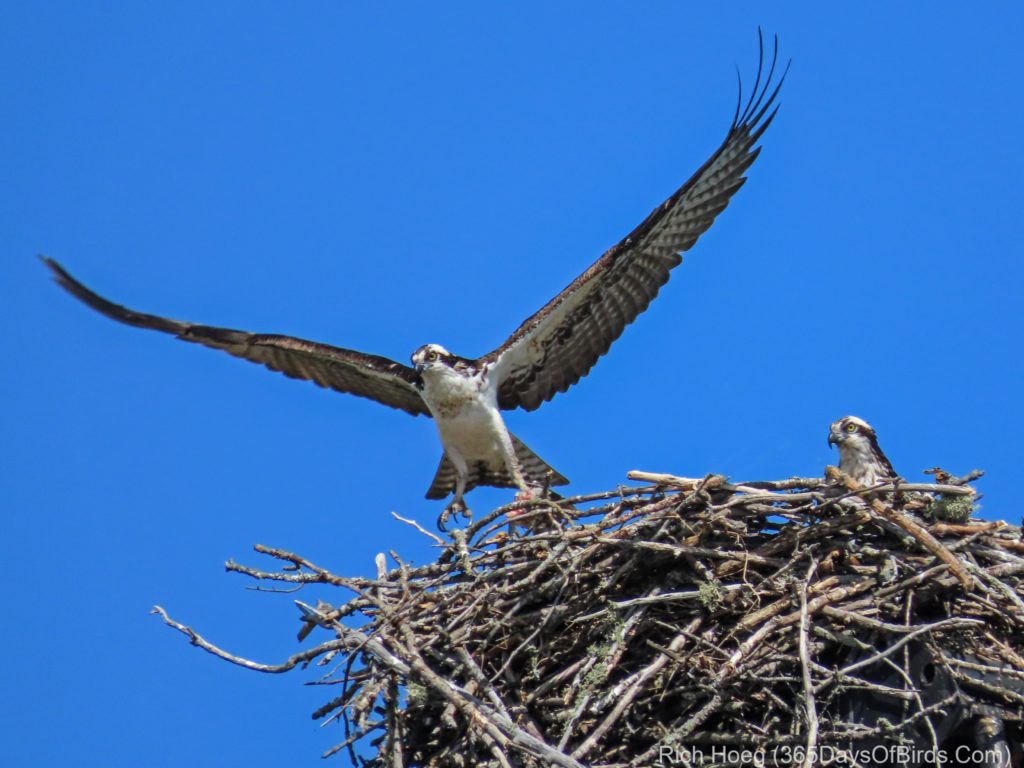
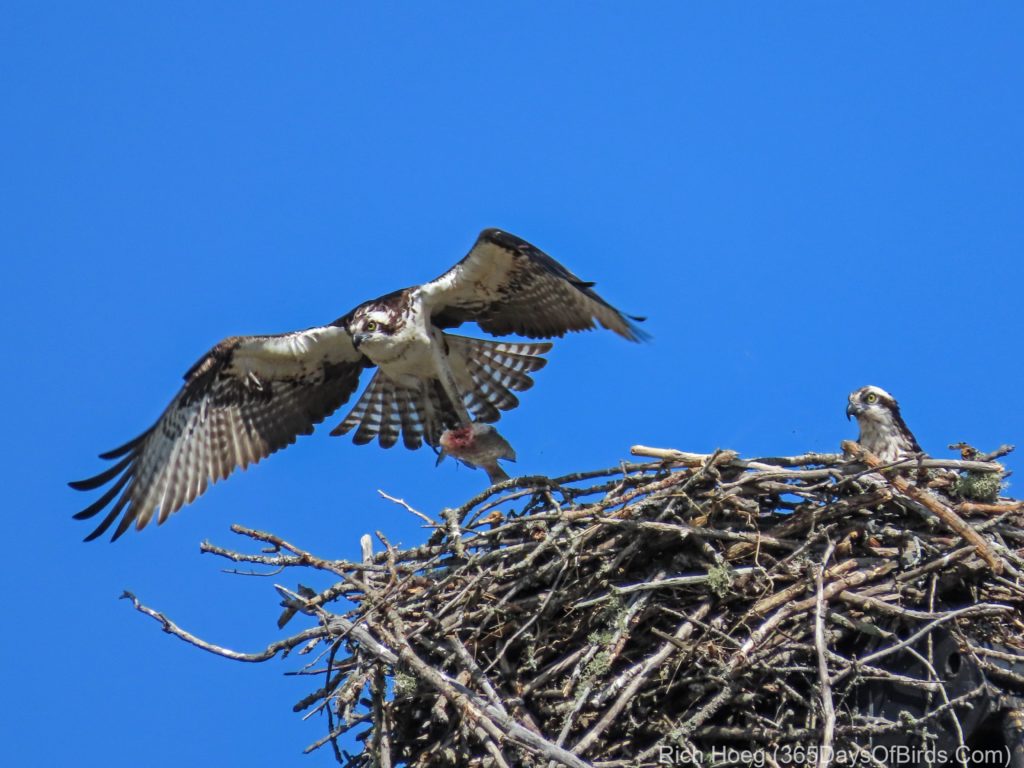
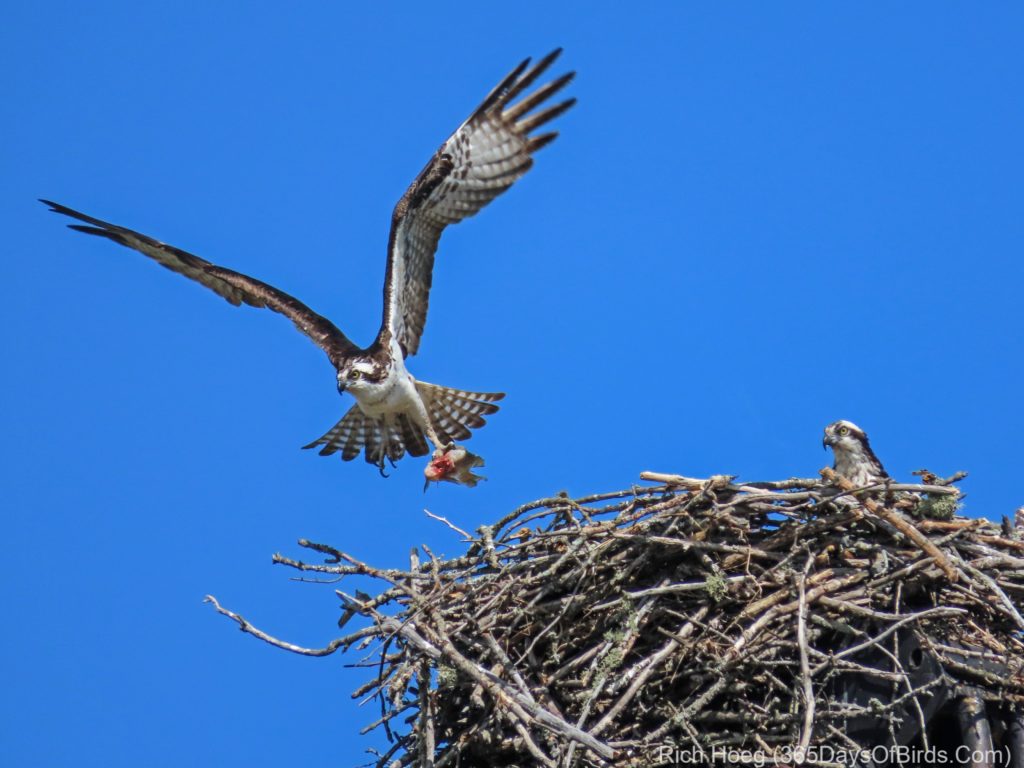
I then moved on to a second nest. I struck pay dirt again! An Osprey busy eating a recent capture. As to not startle the bird, I took 10+ minutes to get in position. Shortly after getting to my desired photography location, I realized the Osprey was upset, but not at me. The bird kept looking up into the sky and issuing a challenge. It took me a while, and quite frankly I expected to spy a bald eagle, but I finally saw two additional ospreys high overhead. Their presence was NOT desired. It took me well over 15 seconds to spot these birds even though the Osprey knew of their presence immediately! In the four photos you can observe that the Osprey’s wings are ready for instant take-off should defense of the nest and his mate become necessary.
Issuing a Challenge to the other two Ospreys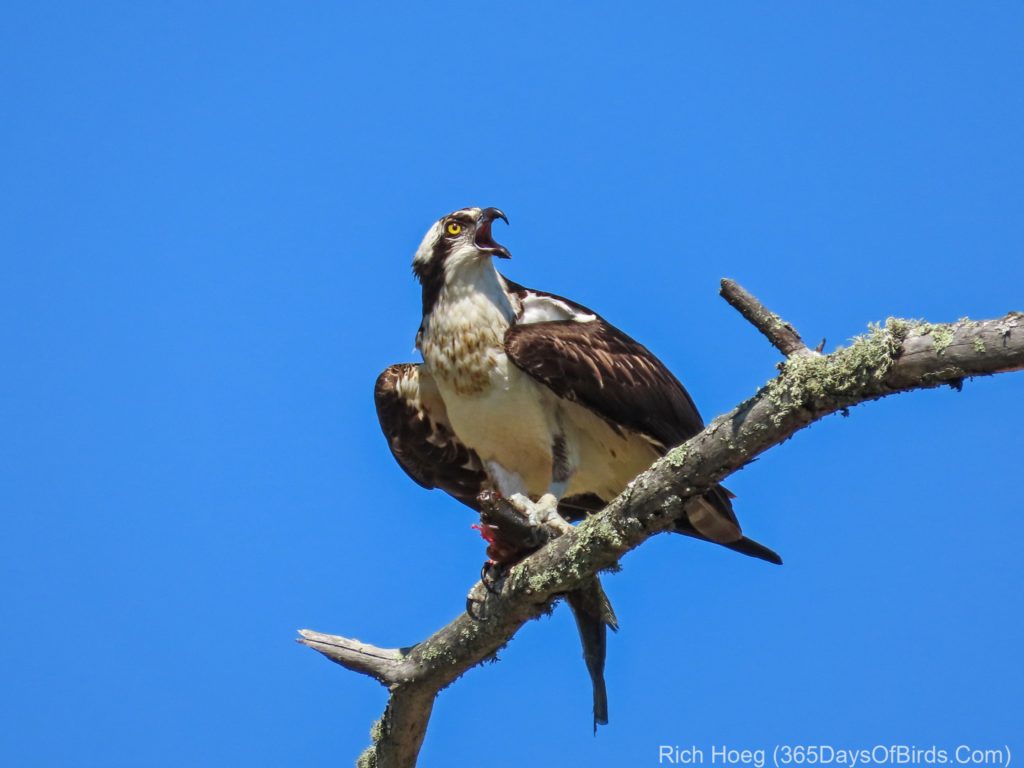
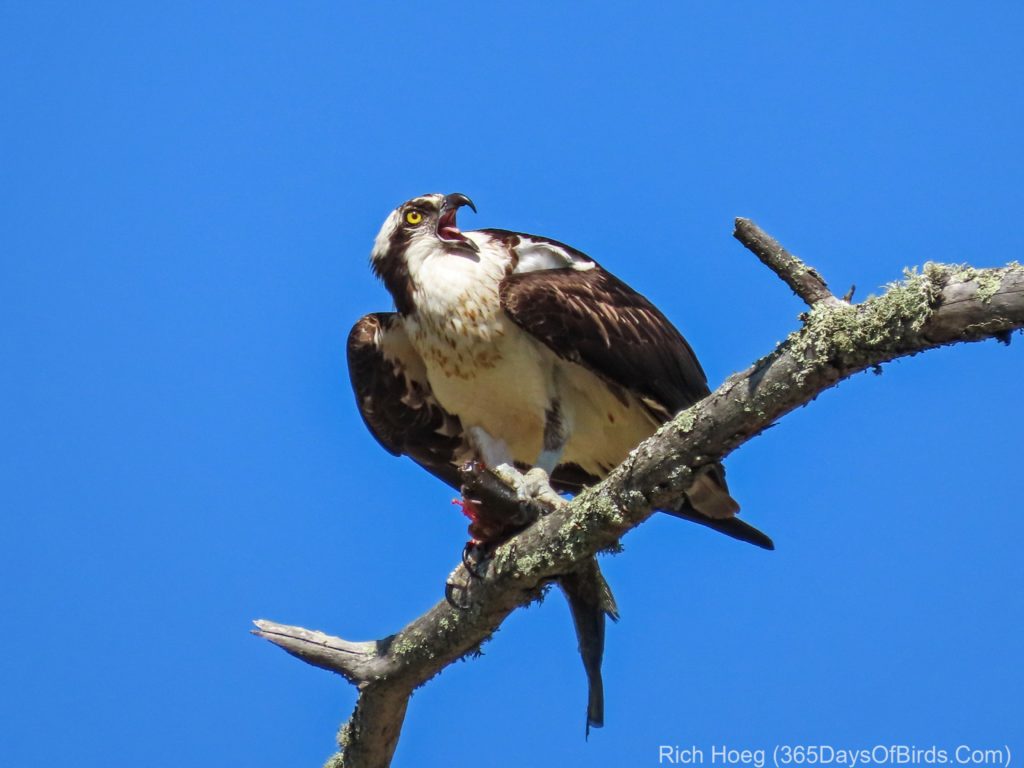
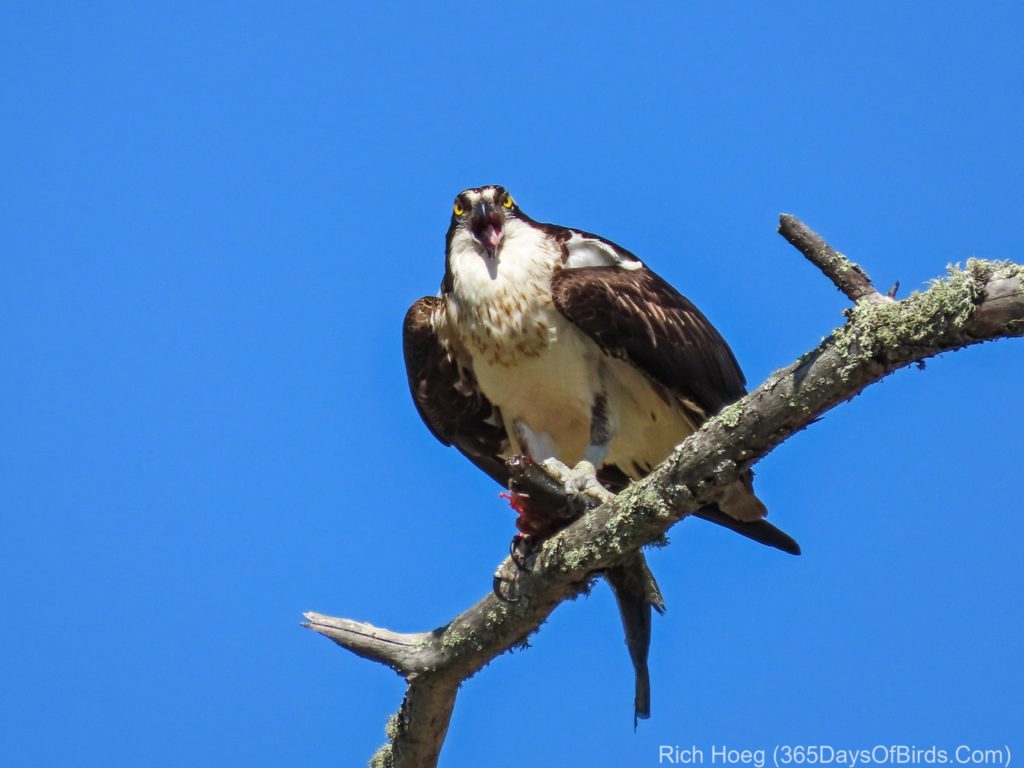
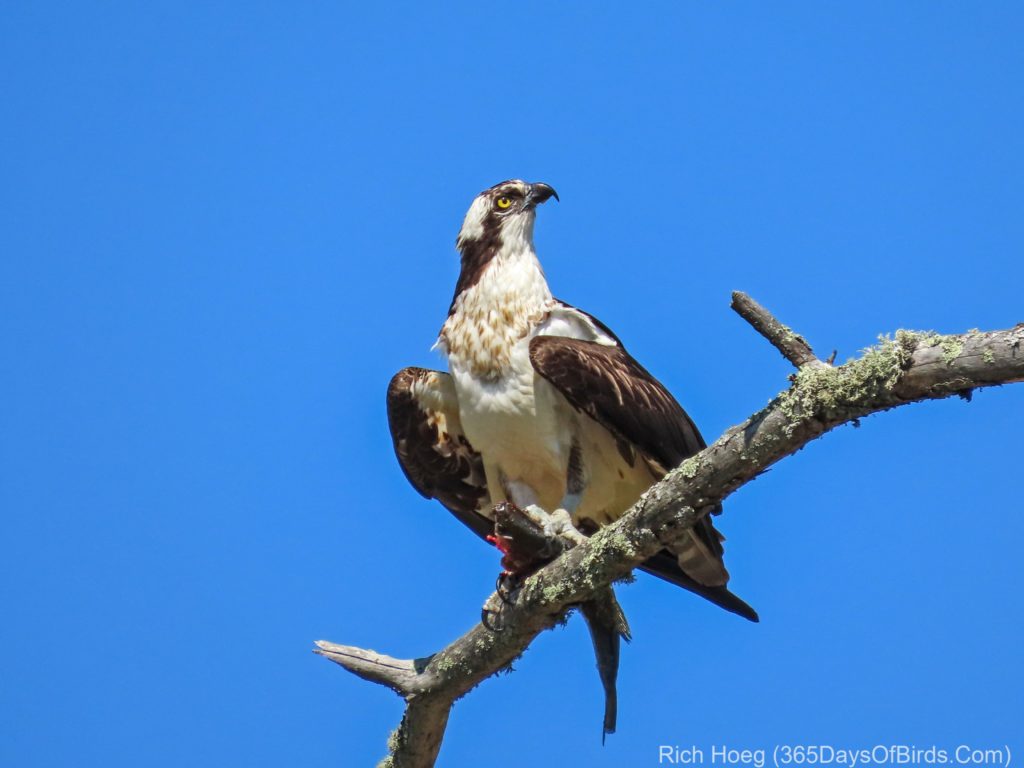
Thankfully the interlopers glided off on some thermals, and my bird could get back to eating fish.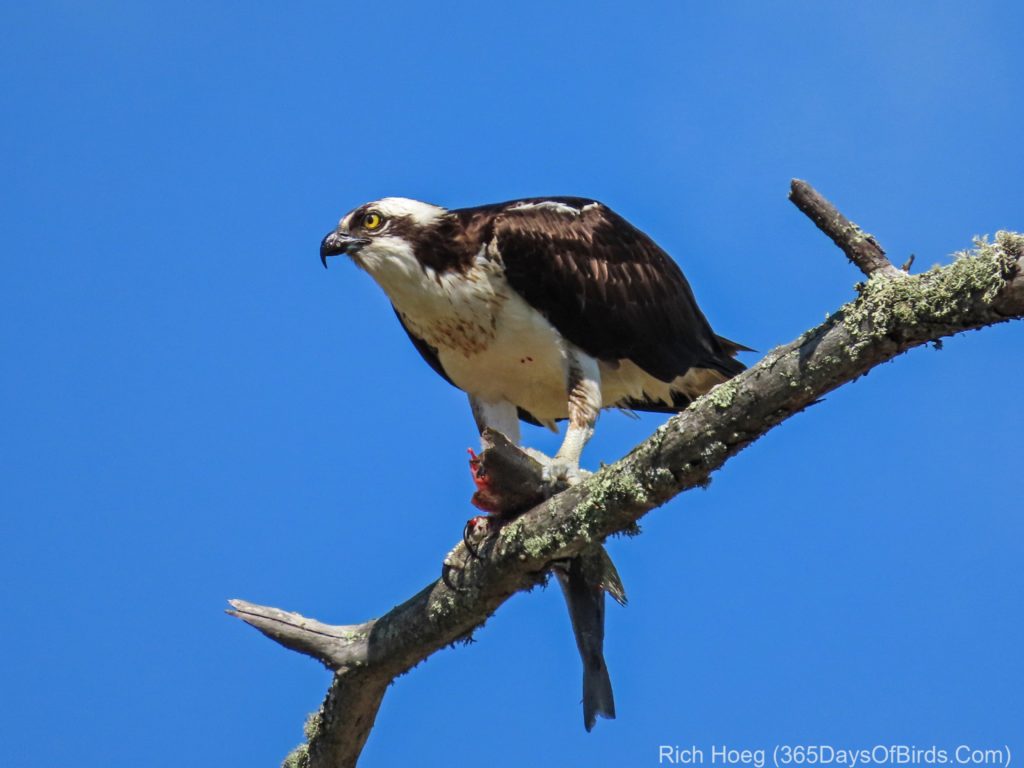
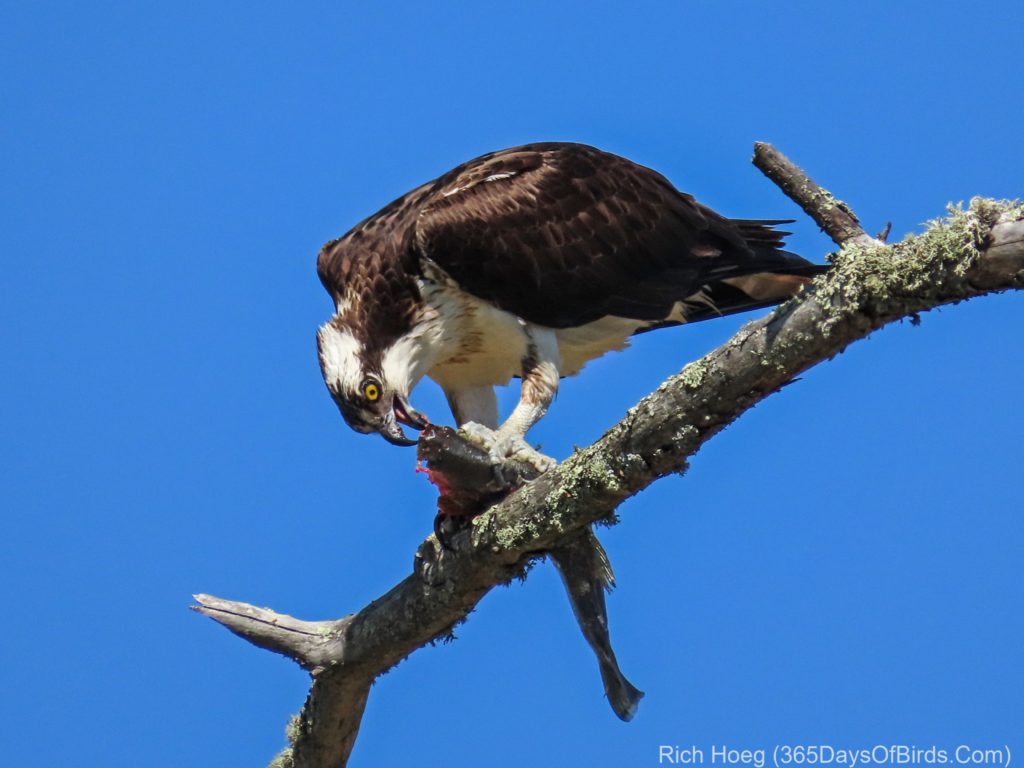
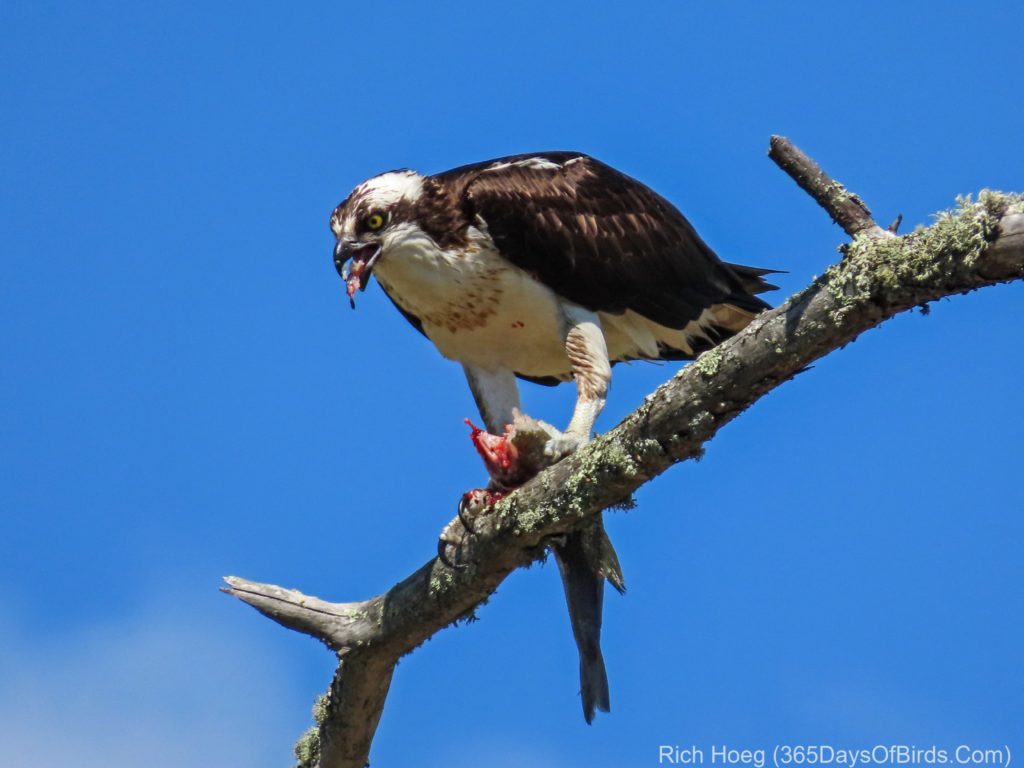
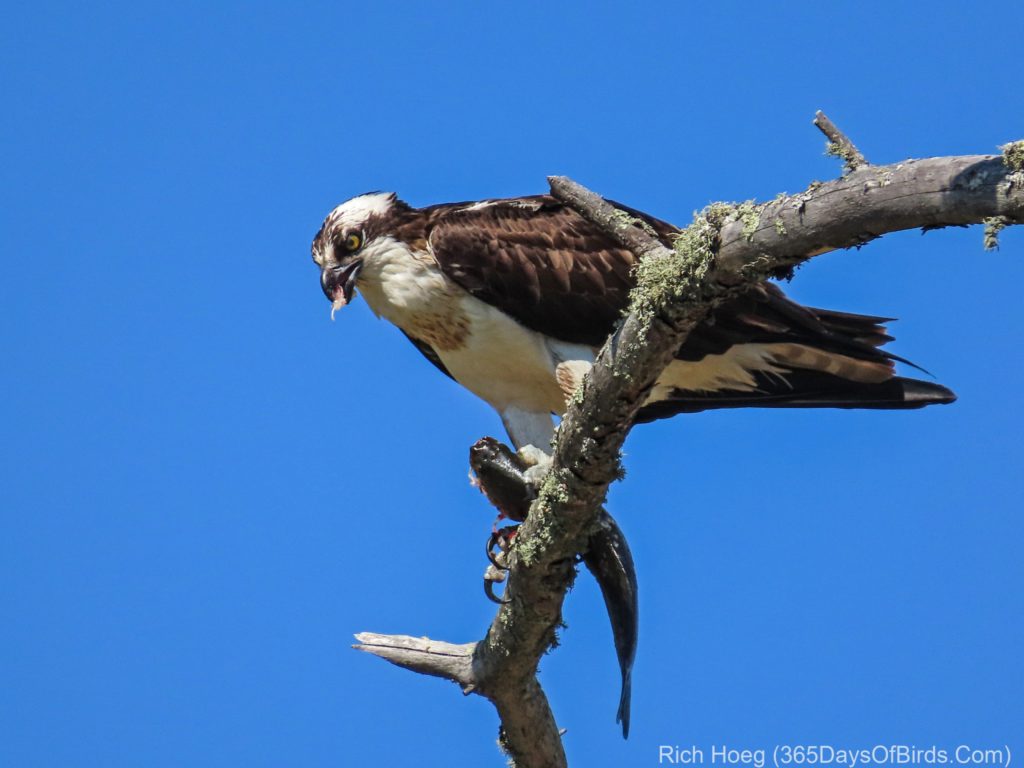
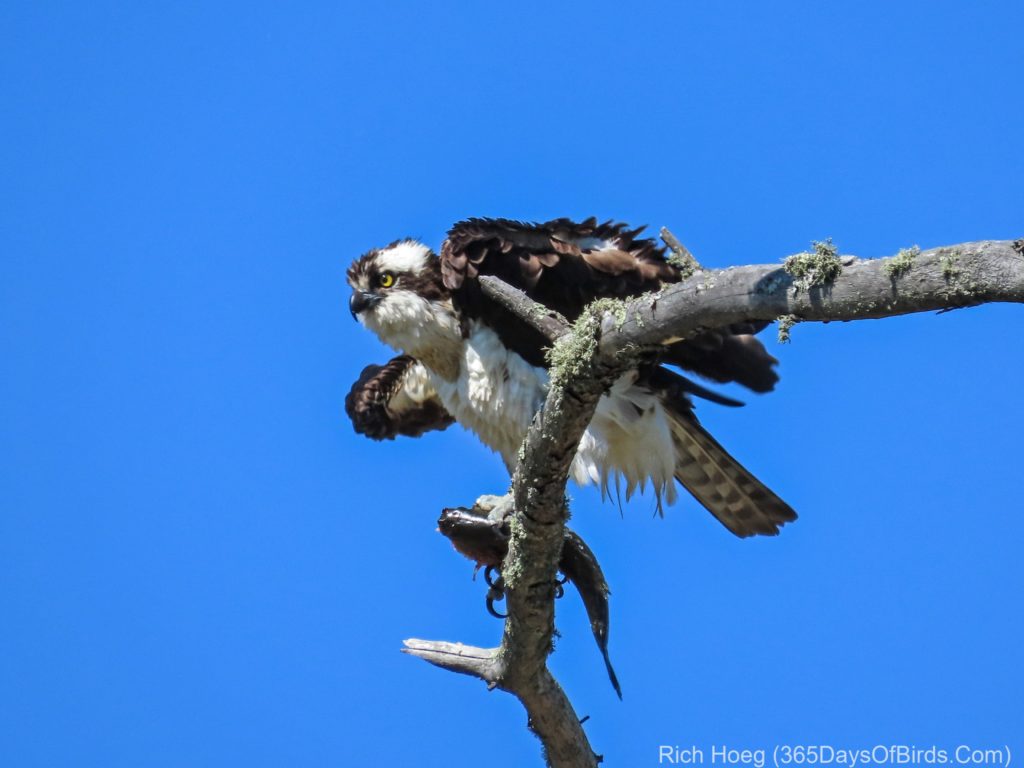
Discover more from 365 Days of Birds
Subscribe to get the latest posts sent to your email.
Hi, I found this post under the link “videos” in your SX70 review. I am wondering if you took the images as frame stills from 4k videos. Many thanks for sharing your work/play with your cameras.
No. I use the high speed continuous mode with RAW turned off, which allows the camera to take 12 images per second. In addition, the lighting was perfect early in the morning and I had set up my location perfectly in line with the nests … the sun directly behind me allowing for a low ISO and an extremely fast shutter speed. Turning on RAW slows the continuous mode quite a bit because of all the data that must be written to the simm card.
Stunning, just stunning.
Absolutely stunning photos!
I’ve been reading your blog for some time, and find some excellent nuggets of information there. Your photos of the osprey show something I’ve often observed and wondered about, which is that when ospreys being a fish back to their nest, it’s always minus a head. Do you know why that is? Is the head too boney and not worth eating? Or conversely, is the lipid-rich brain a delicacy the bird prefers to eat first?
Sue: While I personally do not know the answer to your headless fish prey question, I did find this discussion … worth a read … https://puleston.osprey.bnl.org/MessageView2007.php?thread=41011&mess=6
Interesting, thanks!